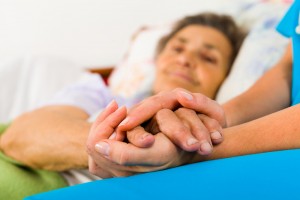
While not all who have cancer will experience it, some cancer patients may experience pain. This may be pain from the cancer itself or pain from various treatment forms but the last thing someone wants to deal with when they are treating cancer is pain. Mayo Clinic elaborates on what causes pain during cancer treatment, “Cancer pain can result from the cancer itself. Cancer can cause pain by growing into or destroying tissue near the cancer. Cancer pain can come from the primary cancer itself — where the cancer started — or from other areas in the body where the cancer has spread (metastases). As a tumor grows, it may put pressure on nerves, bones or organs, causing pain. Cancer pain may not just be from the physical effect of the cancer on a region of the body, but also due to chemicals that the cancer may release in the region of the tumor. Treatment of the cancer can help the pain in these situations. Cancer treatments — such as chemotherapy, radiation and surgery — are another potential source of cancer pain. Surgery can be painful, and it may take time to recover. Radiation may leave behind a burning sensation or painful scars. And chemotherapy can cause many potentially painful side effects, including mouth sores, diarrhea and nerve damage.” Fortunately, while pain during cancer treatment is not ideal, there are a variety of ways to treat and manage cancer pain. If you are experiencing pain it is important to consult your physician who will be able to provide you individualized advice based on your unique health and diagnosis. Cancer pain management can come in the form of medication or other non-medication options. Below we explore some possible ways to manage cancer pain so that you can focus on what matters most during cancer treatment, beating cancer and improving your health.
Pain Management During Cancer Treatment:
1. Opioid Pain Medication
- Opioid medications are narcotic drugs that are used for moderate – severe pain control during cancer treatment. These are prescription drugs that your doctor will recommend and they may be prescribed alongside other non-opioid medications to help manage pain. A few examples of these medications include Hydrocodone, Oxycodone, Morphine, Dilauded, Fentanyl and more. Dosage of opioid medication will be determined by your physician as a part of your cancer pain management plan and can be adjusted as needed should pain decrease or increase. It is important to always consult your physician if an adjustment to dosage is needed to ensure proper opioid safety for your health.
2. Non-Opioid Pain Medication
- Non-Opioid pain medication is over-the-counter medication such as acetaminophen or NSAIDs (non-steroidal anti-inflammatory drugs) such as ibuprofen or aspirin. These medications help manage pain and reduce inflammation and are typically recommended for milk – moderate pain control. While they are over-the-counter medications that do not require a prescription, it is still wise to consult your physician before adding them to your pain management plan because some opioid medications also contain things like Tylenol or NSAIDs.
3. Complimentary Therapy
- While medication may be the most effective form of pain management during cancer treatment, many have found that complimentary therapy can make a great addition or even work just as well for certain forms of pain. Complimentary therapy may include physical therapy, acupuncture, massage and more.

